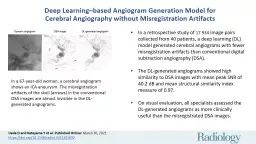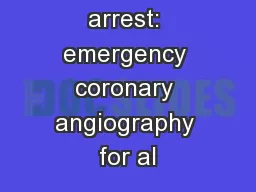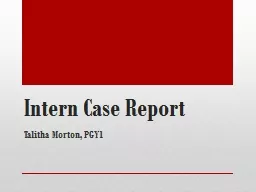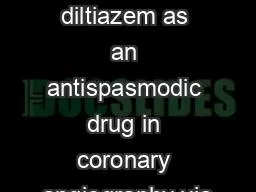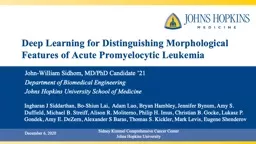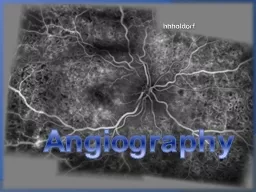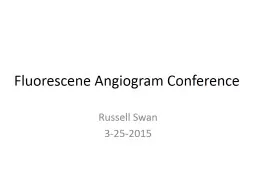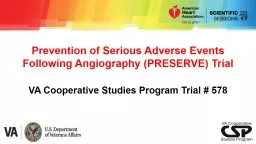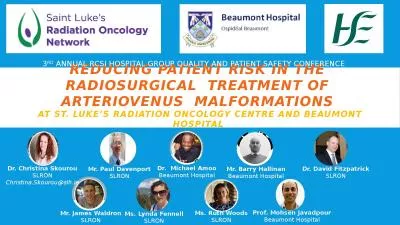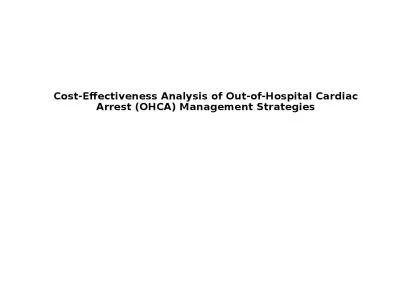PPT-Deep Learning–based Angiogram Generation Model for Cerebral Angiography without
Author : natalie | Published Date : 2022-06-07
Misregistration Artifacts Ueda D and Katayama Y et al Published Online March 30 2021 httpsdoiorg101148radiol2021203692 In a retrospective study of 17 934
Presentation Embed Code
Download Presentation
Download Presentation The PPT/PDF document "Deep Learning–based Angiogram Generati..." is the property of its rightful owner. Permission is granted to download and print the materials on this website for personal, non-commercial use only, and to display it on your personal computer provided you do not modify the materials and that you retain all copyright notices contained in the materials. By downloading content from our website, you accept the terms of this agreement.
Deep Learning–based Angiogram Generation Model for Cerebral Angiography without: Transcript
Download Rules Of Document
"Deep Learning–based Angiogram Generation Model for Cerebral Angiography without"The content belongs to its owner. You may download and print it for personal use, without modification, and keep all copyright notices. By downloading, you agree to these terms.
Related Documents

